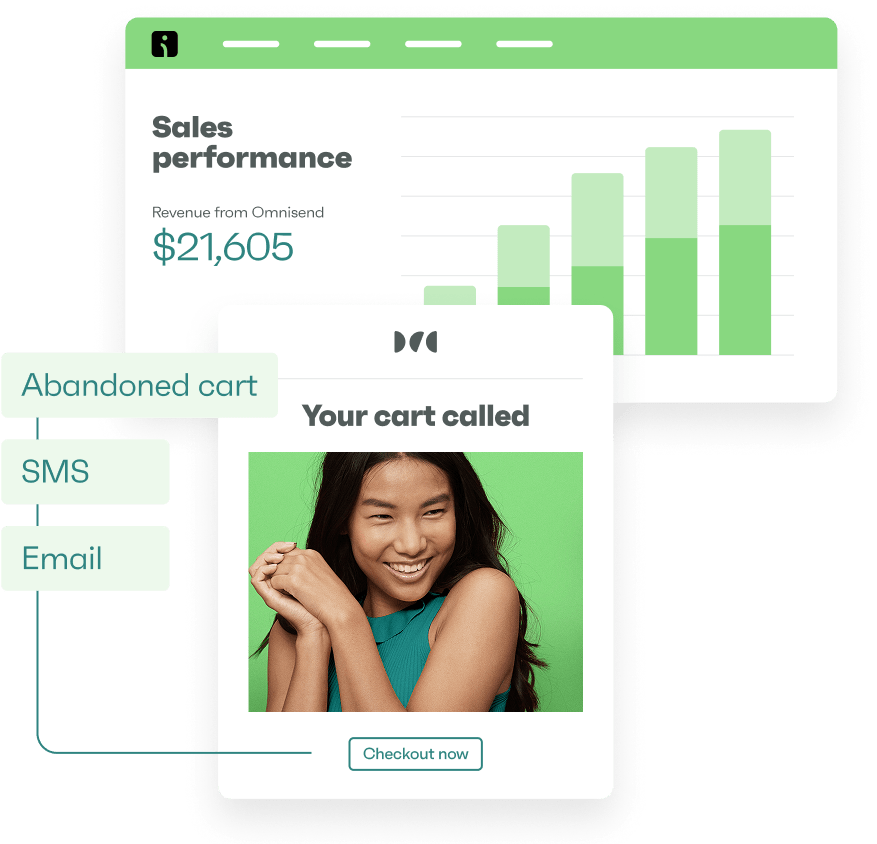Drive sales on autopilot with ecommerce-focused features
See FeaturesThe love for sneakers and training shoes is higher than ever, increasing the number of Shopify shoe stores to meet such demand.
If you’re also thinking about starting a Shopify shoe store or are already running one, understanding what works for successful shops can save you a lot of time and frustration.
Managing an online footwear business requires attention to detail. Customers want to see quality images, detailed sizing guides, and smooth checkout processes.
In this guide, you’ll discover 10 brilliant Shopify shoe stores that nail these elements and more. You don’t have to reinvent the wheel. We’ll teach you specific tactics to apply to your shop to maximize sales.
What makes a great Shopify shoe store?
Certain elements set top-performing Shopify stores apart from average ones. Great Shopify shoe stores don’t just look good. They’re built strategically from the ground up to guide customers from browsing to buying.
Here are the key factors that make Shopify shoe stores successful:
- Professional product photography: Shoes must be shown from multiple angles — top view, side view, back view, and ideally on a model. Clear, zoomable images help customers make confident buying decisions.
- Intuitive navigation: Your customers should be able to find what they want quickly, whether they’re browsing by style, size, occasion, or price. The best Shopify shoe stores organize their collections logically and make filters easily accessible.
- Detailed size guides: Footwear sizing varies dramatically between brands and styles. Successful shoe stores provide comprehensive size charts, fit recommendations, and detailed insole measurements to reduce return rates.
- Consistent brand identity: The most memorable Shopify shoe stores have a unified visual language, from their logo and color scheme to typography. This builds trust and makes your store instantly recognizable.
- Frictionless checkout: Minimize hurdles with guest checkout options and multiple payment methods. The best stores include clear shipping policies indicated on the product page.
10 best Shopify shoe stores to learn from
If you’re looking for inspiration, the 10 Shopify shoe stores covered here highlight mastery of various aspects of online retail. Each offers valuable lessons you can adapt for your own store.
1. Rothy’s
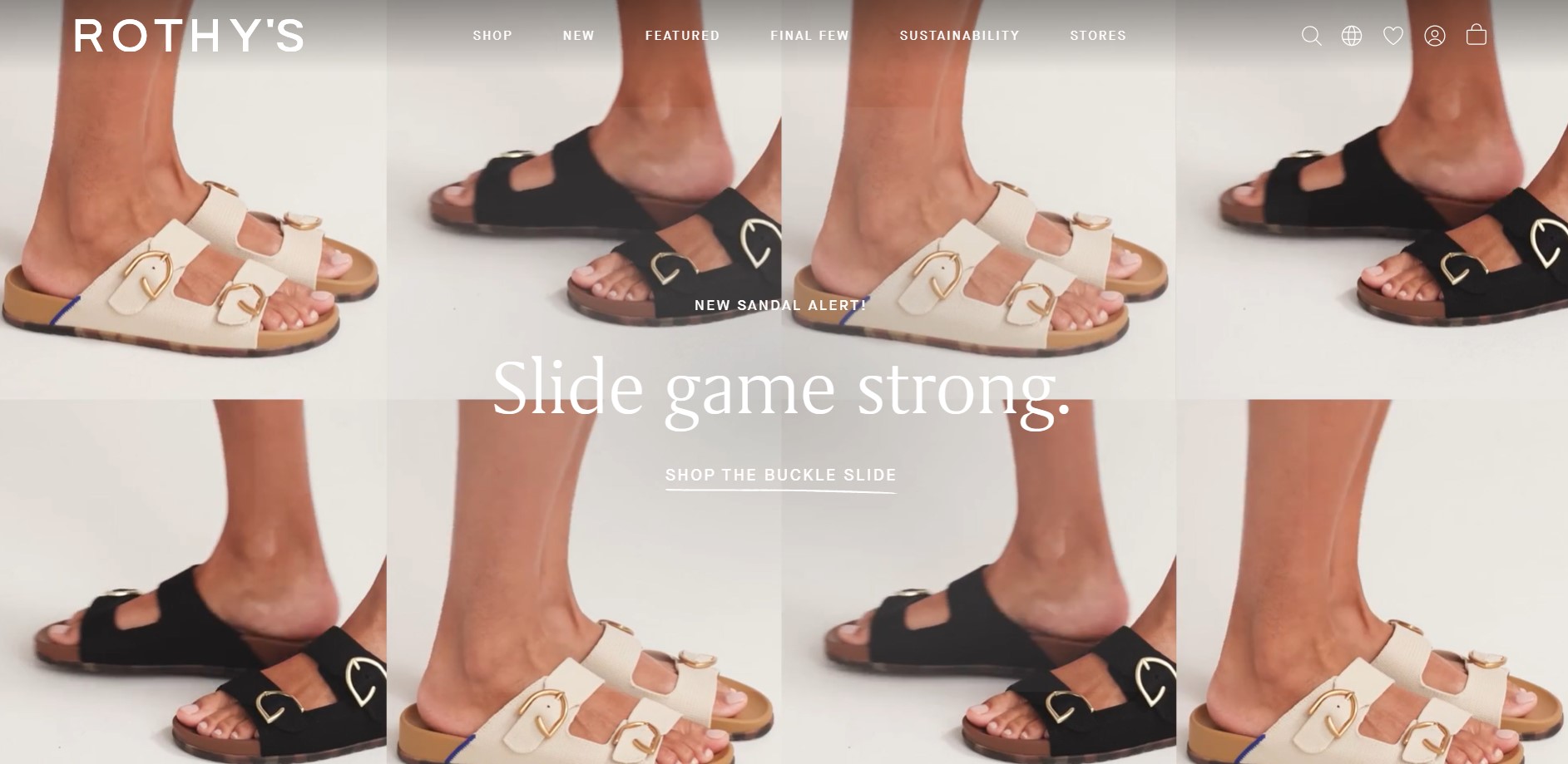
Rothy’s understands the art of turning sustainability into a selling point. Its Shopify store communicates its eco-friendly commitment — shoes made from recycled plastic bottles with a 3D knitting process that creates minimal waste.
What makes it stand out
Rather than simply listing features, Rothy’s explains the impact of each purchase. Its product pages include details about its manufacturing process. It also provides engaging visuals that show how water bottles become fashionable footwear.
Key takeaway for Shopify shoe stores
The power of transparency. Today’s customers care about where their products come from. Highlighting your sustainable practices or ethical manufacturing can create an emotional connection that drives loyalty and word-of-mouth marketing.
2. Beckett Simonon
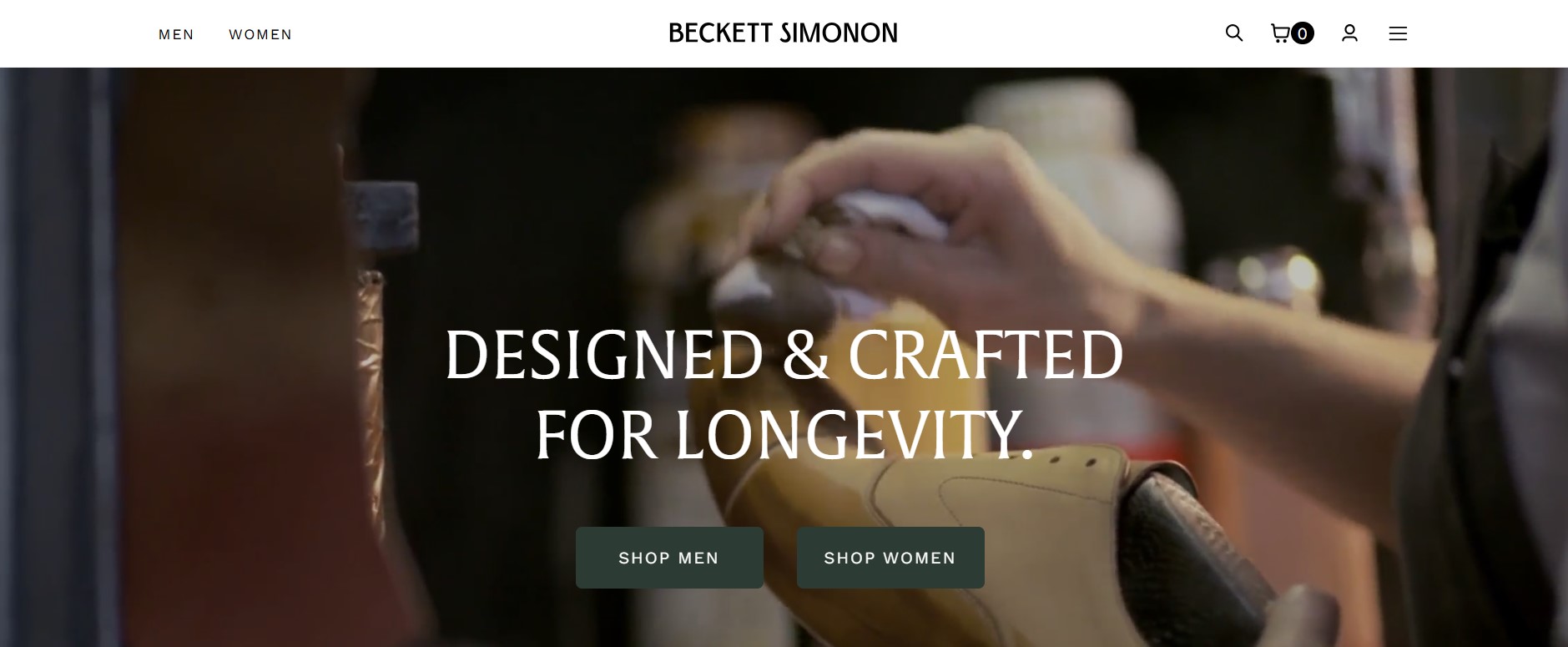
Beckett Simonon has built its Shopify store around a made-to-order business model that’s worth studying. Instead of maintaining expensive inventory, it produces shoes only after receiving orders. This allows the brand to offer premium handcrafted footwear at competitive prices.
What makes it stand out
This site excels at managing customer expectations. It clearly explains its production timeline and why the wait is worthwhile for quality and value.
Key takeaway for Shopify shoe stores
Find out if key elements of a made-to-order model might work for your business. Even if you stock inventory, the transparency around production processes and regular communication with customers are practices worth adopting.
3. Sneaker Politics
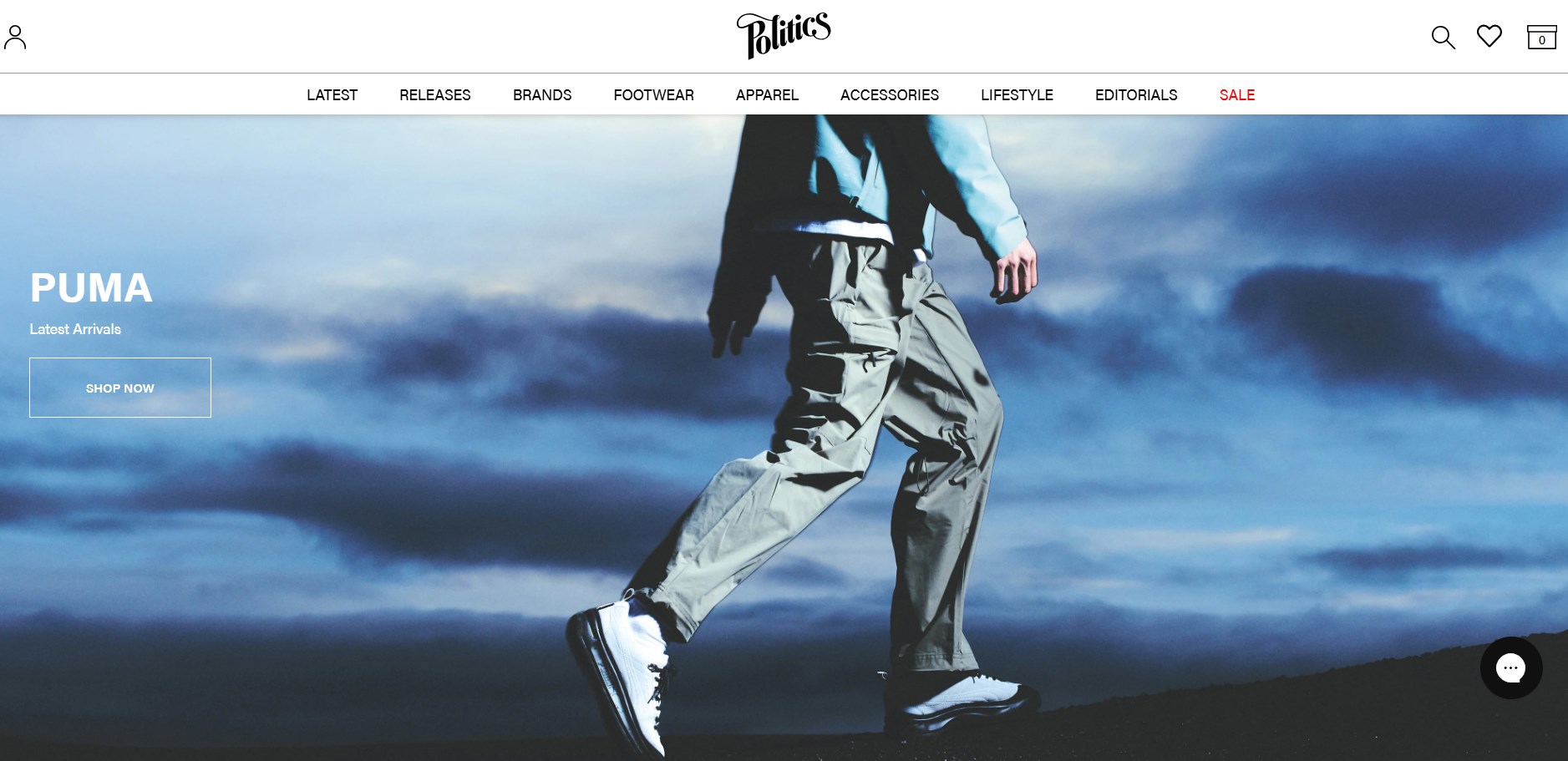
Sneaker Politics has turned its Shopify store into a community hub for sneaker enthusiasts. The brand has designed its entire shopping experience around sneaker culture. It treats footwear as collectible items and status symbols rather than just everyday necessities.
What makes it stand out
It stands out among other Shopify shoe stores with its curated selection of limited-edition releases and collaborations, creating a sense of exclusivity. Its product drops generate excitement through countdown timers and email/SMS alerts, transforming regular product releases into events.
Key takeaway for Shopify shoe stores
Consider how you might cultivate a community among your customers. SMS alerts for new inventory, member-exclusive releases, or local events can turn one-time buyers into loyal fans who check your site regularly for new releases.
4. Katy Perry Collections
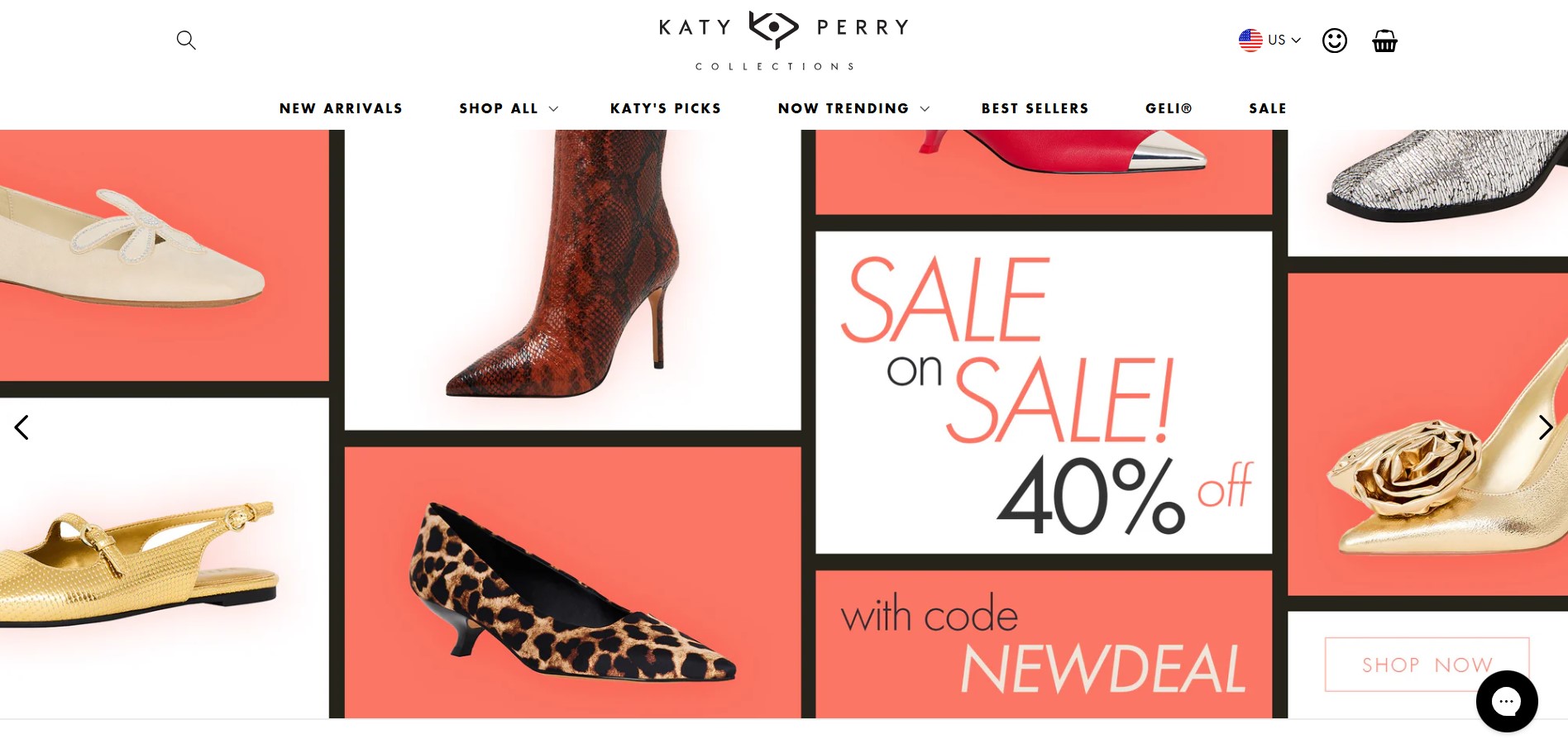
Katy Perry Collections uses celebrity branding effectively on its Shopify store without letting it overshadow the products. The footwear reflects the singer’s playful personality with bold designs and quirky details.
What makes it stand out
This site cleverly balances the celebrity connection with practical shopping features. While the brand draws from Katy’s aesthetic, the site focuses on usability with clear categorization and detailed product specifications.
Key takeaway for Shopify shoe stores
Personality sells. Even without a celebrity name, infusing your brand with a distinctive character can set you apart. Consider how your website can reflect your brand’s unique voice.
5. Thursday
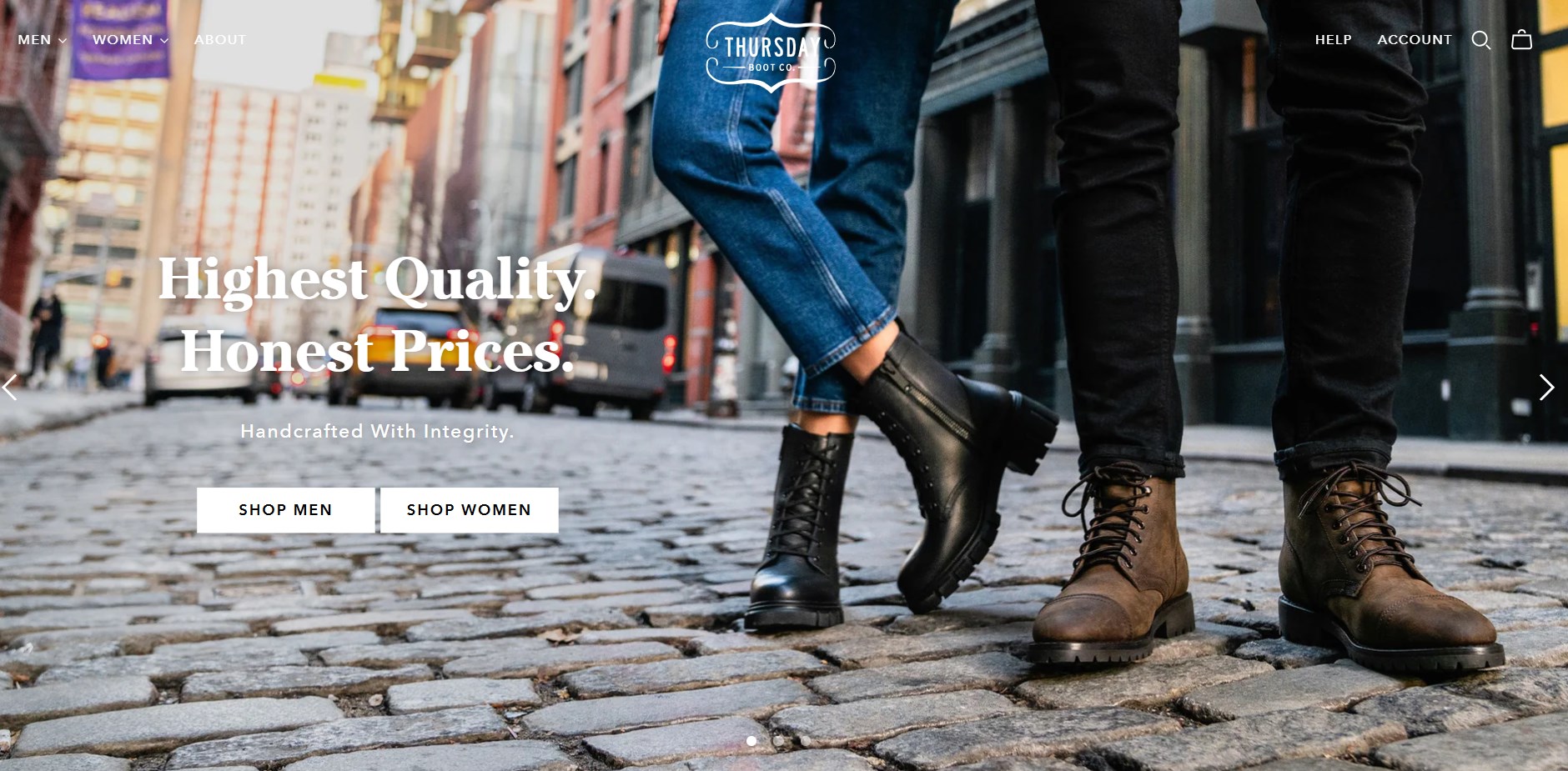
Thursday Boot Company’s Shopify store demonstrates the power of focusing on a specific problem. It identified a gap in the market — the lack of boots that bridge the divide between rugged work boots and formal dress boots at reasonable prices.
What makes it stand out
The product pages excel at highlighting versatility, effectively showing how the same boot works with different outfits and occasions. Thursday also mastered the art of the comparison chart, helping customers understand what makes its boots different from competitors.
Key takeaway for Shopify shoe stores
Identify and communicate your unique value proposition. Highlight the specific problem your shoes solve.
6. Peter Nappi
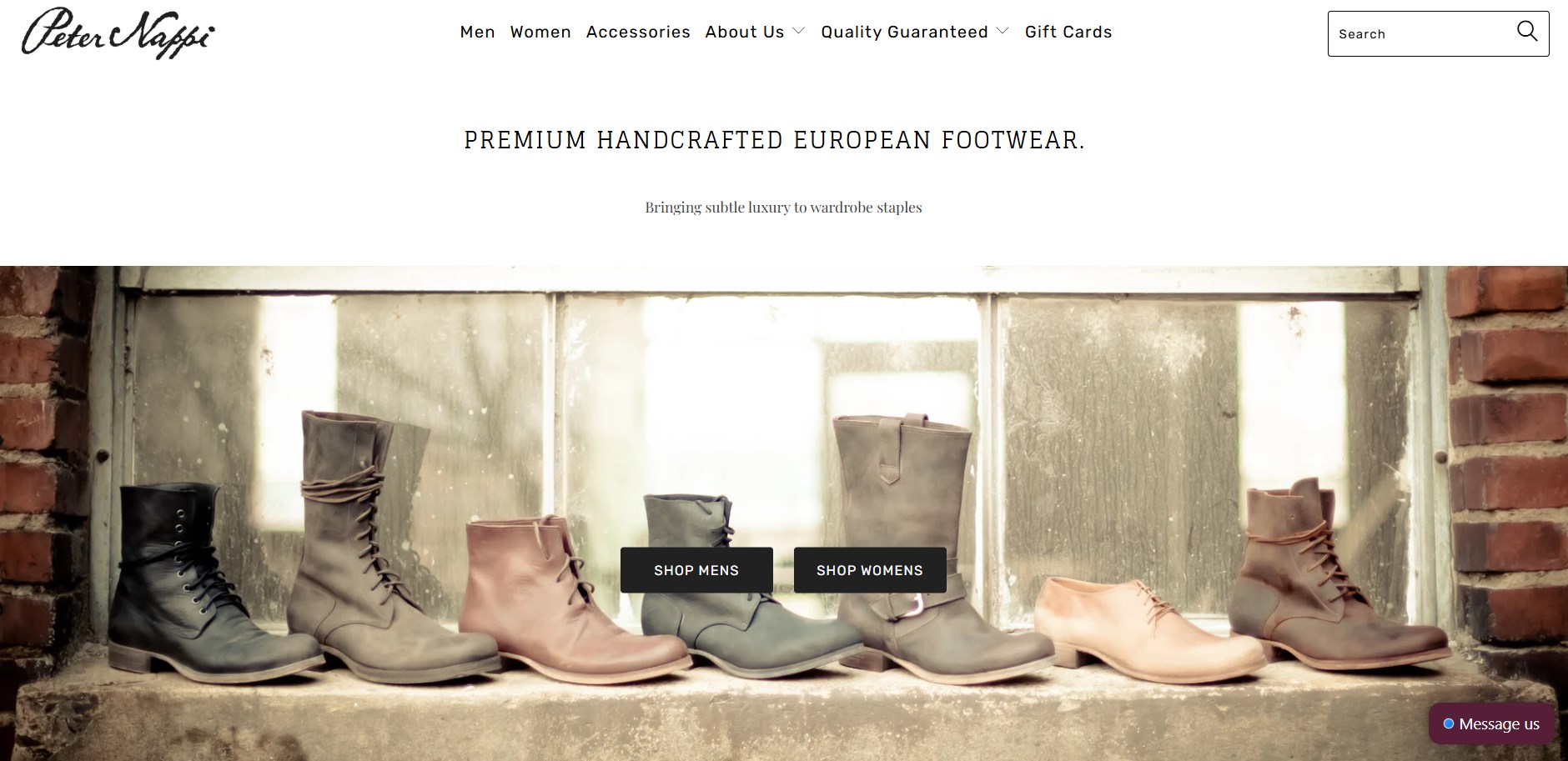
Peter Nappi’s Shopify store focuses on products that showcase luxury. It sells premium Italian-crafted boots and shoes while keeping its site approachable and story-driven.
What makes it stand out
Peter Nappi effectively blends heritage storytelling with modern ecommerce. Each product connects to the founder’s family history of Italian shoemaking. This creates an emotional dimension to the shopping experience.
Key takeaway for Shopify shoe stores
Consider how you might incorporate storytelling elements. You don’t need to have a century’s worth of history. Sharing your brand’s origins, design inspiration, or manufacturing process can add depth to the shopping experience and justify premium pricing.
7. Vince Camuto
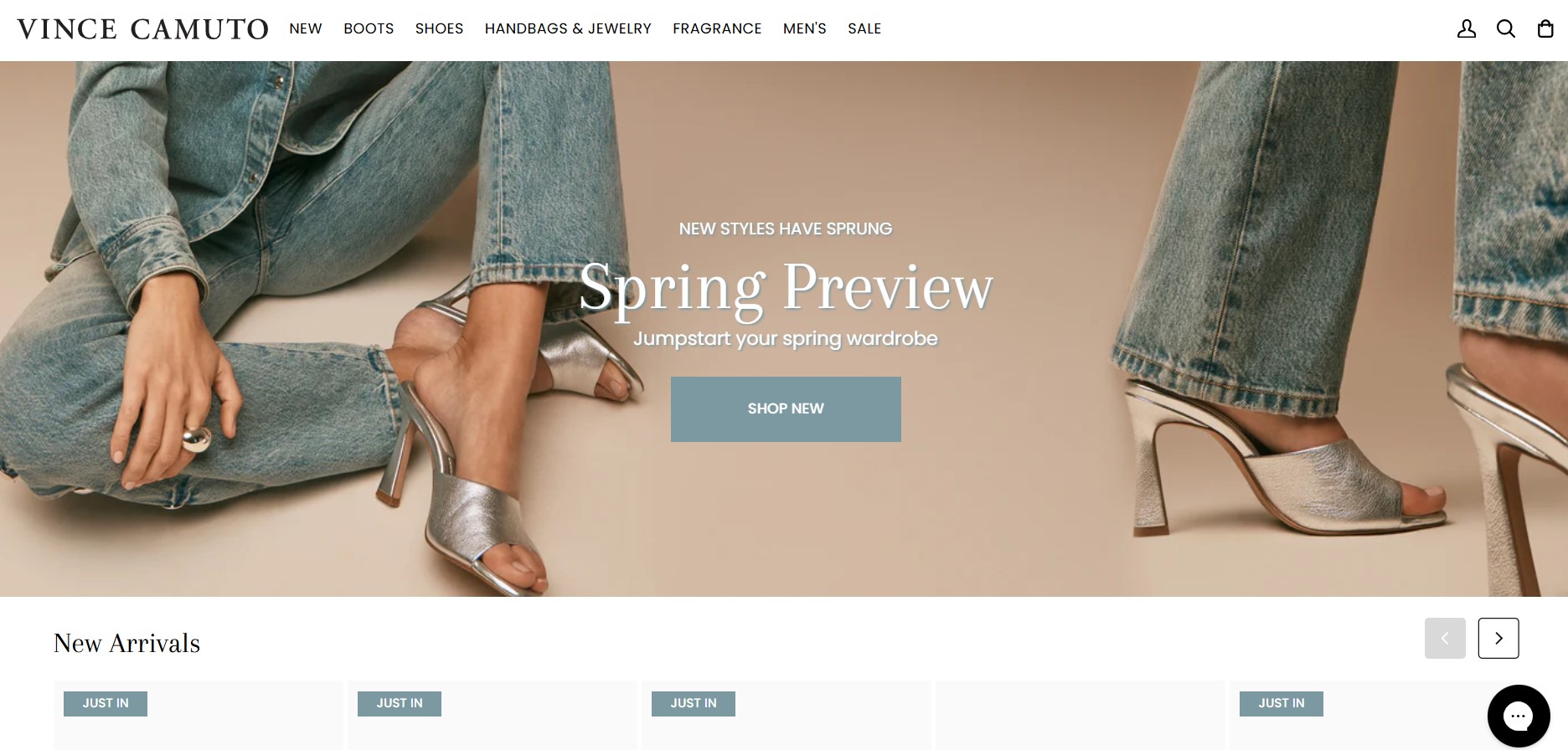
Vince Camuto’s Shopify store excels at cross-selling and category expansion. What started as primarily a women’s footwear brand has successfully branched into handbags, apparel, and accessories.
What makes it stand out
Its site architecture makes it easy to browse across categories while maintaining a cohesive brand experience. Product recommendations are smartly curated to suggest complementary items that make sense together, such as in the example below:
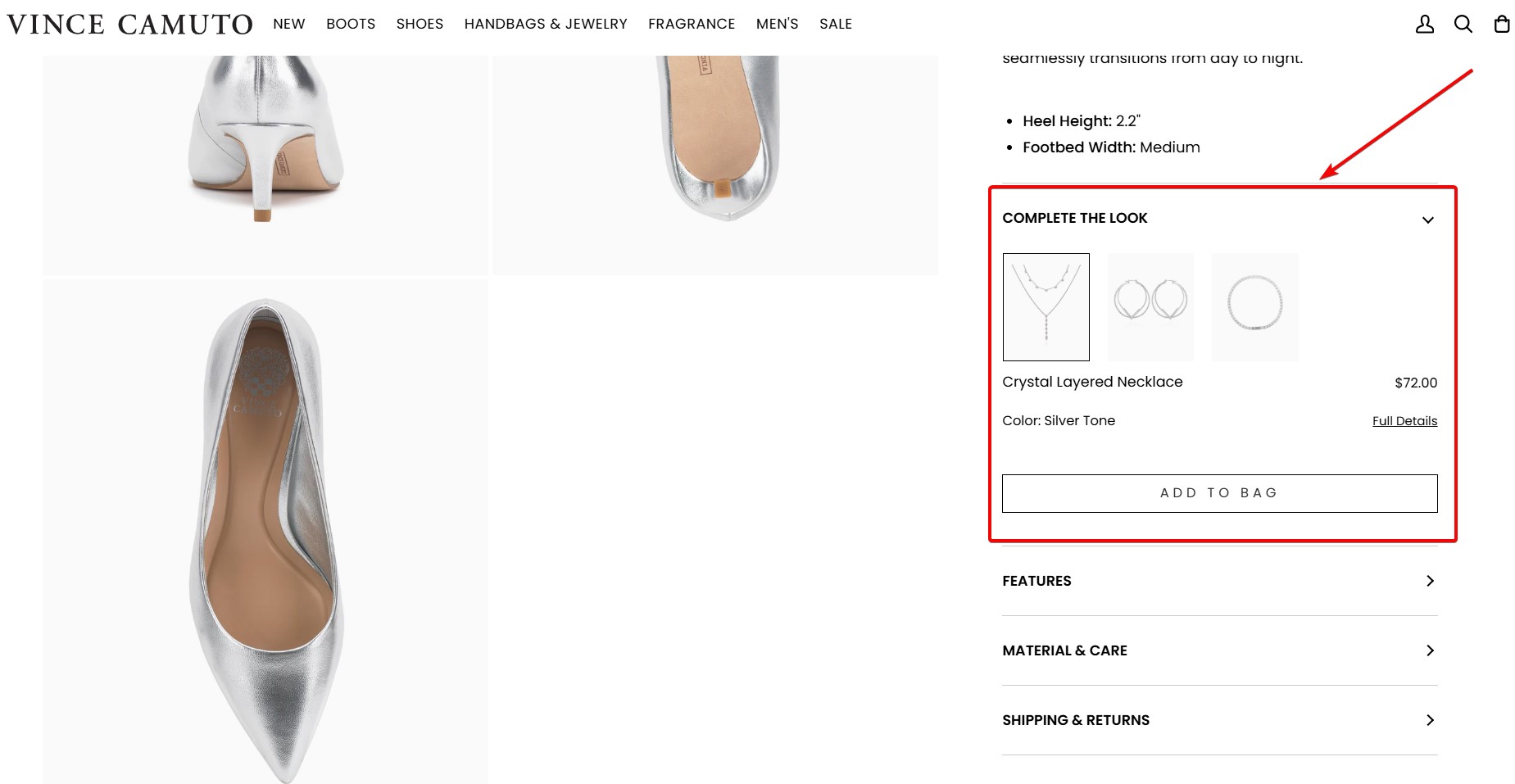
Key takeaway for Shopify shoe stores
Think about the customer’s complete needs. What else might someone buy alongside your shoes? Strategic category expansion and thoughtful product recommendations can significantly increase your average order value.
8. Public Desire
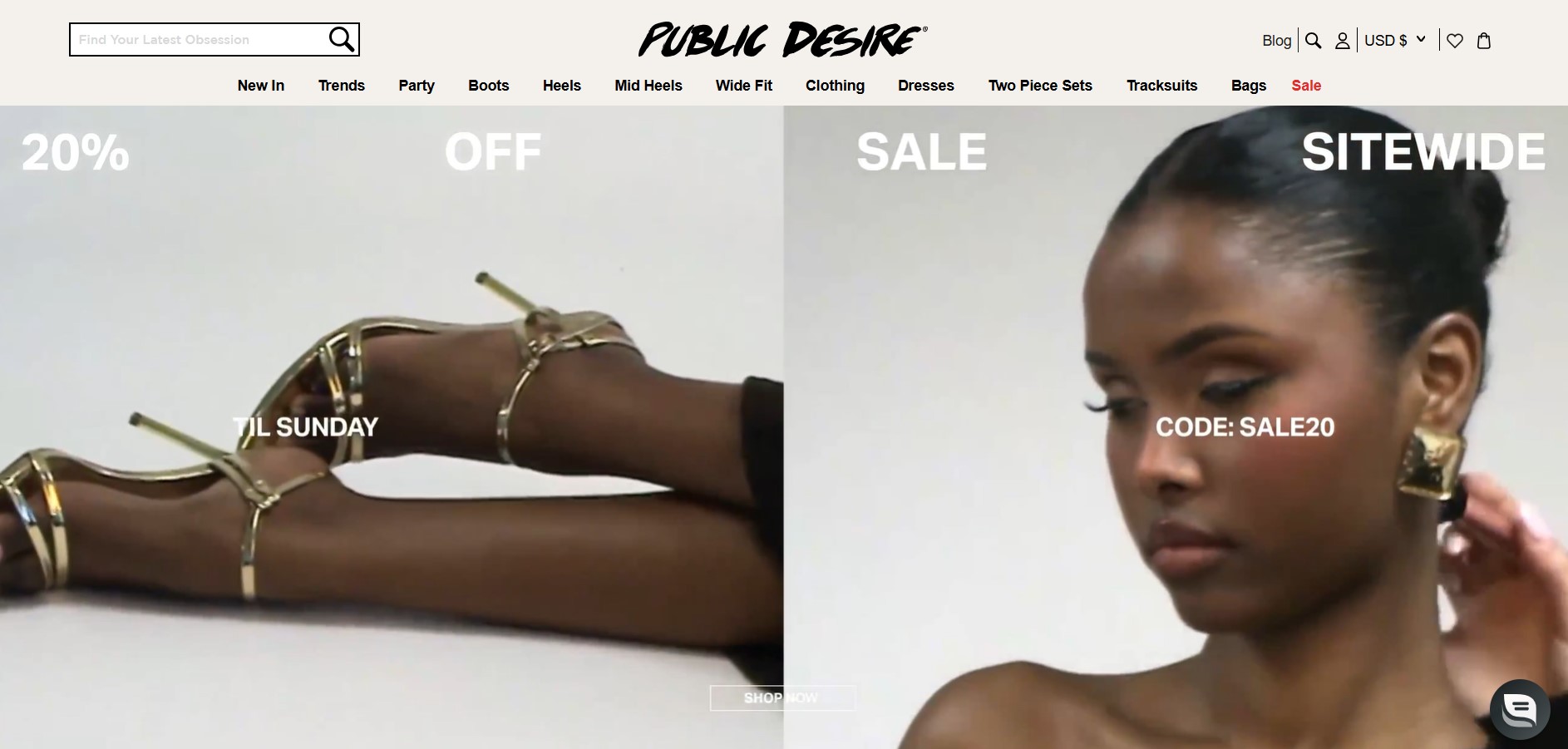
Public Desire has built its Shopify store for the social media generation. It understands that many of its customers discover products on Instagram or TikTok before visiting its website, which is why it takes social media branding seriously.
What makes it stand out
Public Desire’s product pages feature user-generated content prominently, showing real customers wearing its shoes. It’s also optimized for mobile shopping with simplified navigation and quick-buy options.
Key takeaway for Shopify shoe stores
Think about your customers’ discovery journey. If social media plays a big role, make sure your Shopify store creates a seamless transition from platforms like Instagram to checkout. Tools that let you tag products in social posts can create direct shopping pathways.
9. Kick Game
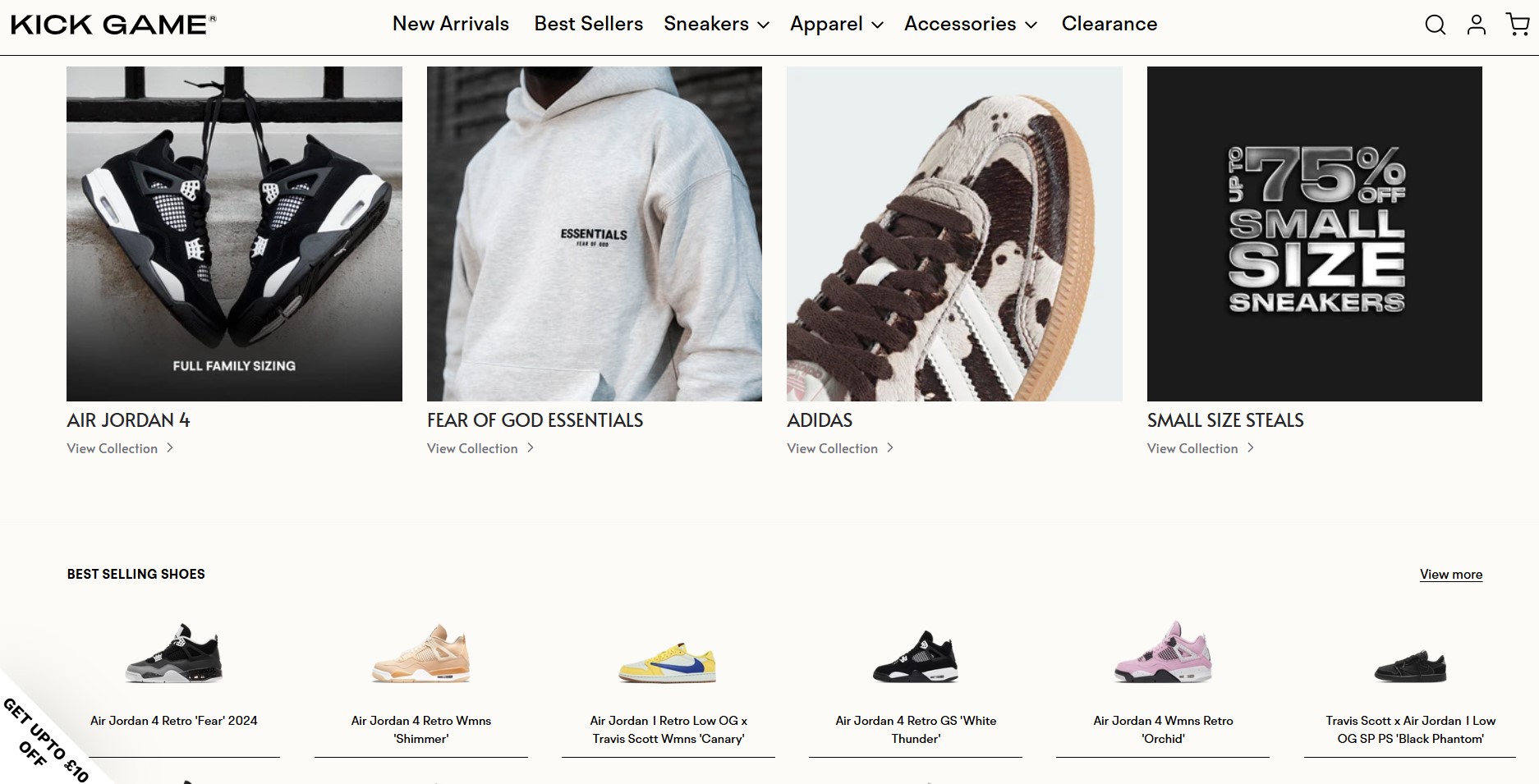
Kick Game has positioned its Shopify store as a marketplace for sneaker collectors and enthusiasts. It’s created an online destination for limited-edition and rare sneakers that mirrors the excitement of physical sneaker conventions.
What makes it stand out
Kick Game stands out for its authentication process and transparency. Trust is essential for high-value collectible sneakers. As such, Kick Game clearly explains its verification methods and condition ratings to gain consumer trust.
Key takeaway for Shopify shoe stores
The importance of building trust with specialized audiences. If you’re selling in a niche with knowledgeable customers, being transparent about sourcing, authenticity, and quality standards is crucial for credibility.
10. Orthofeet
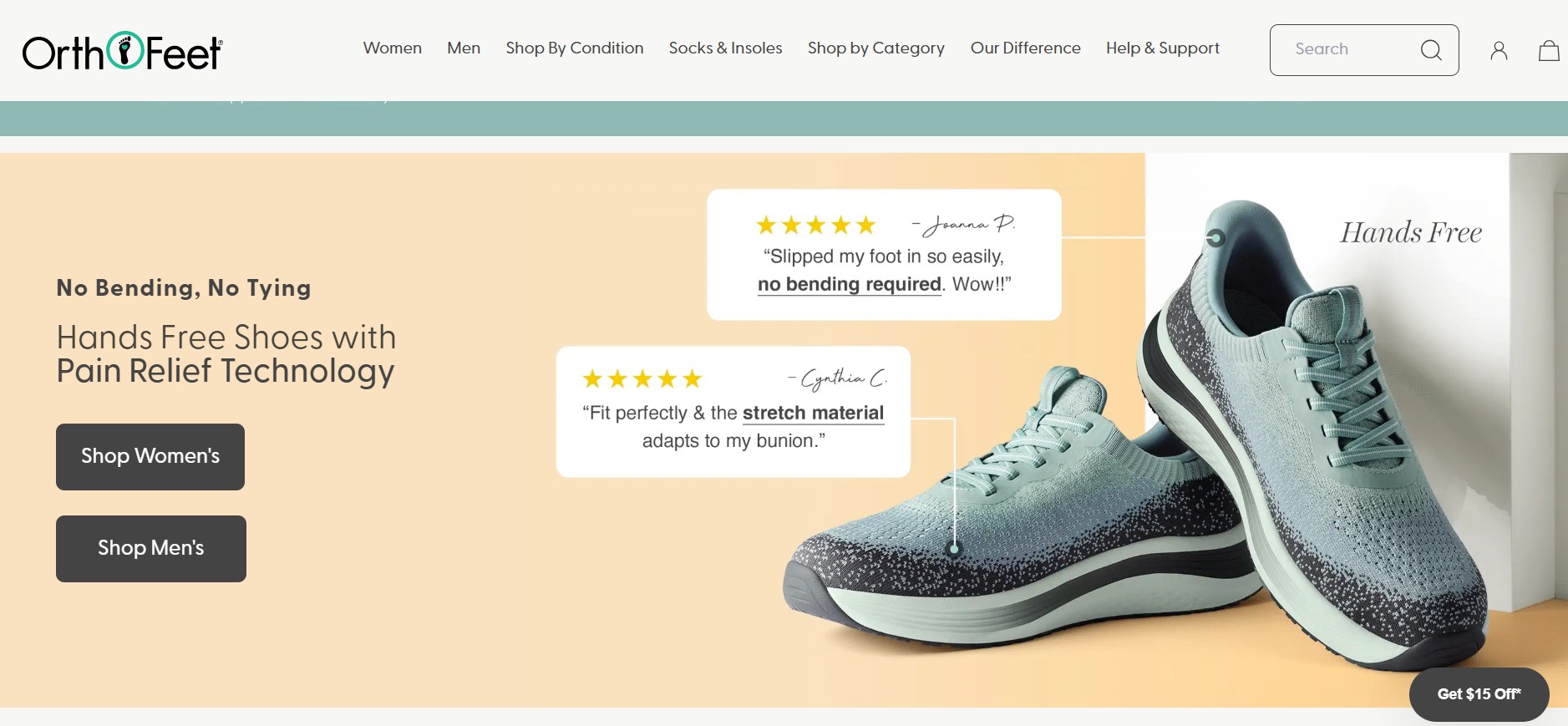
Orthofeet shows how to market functional shoes to a specific audience with particular needs. Its Shopify store focuses on comfort and therapeutic benefits for customers with foot conditions.
What makes it stand out
Its product pages excel at balancing technical information with simple explanations. It uses diagrams, videos, and easy-to-understand descriptions to explain biomechanical features without overwhelming customers.
Key takeaway for Shopify merchants
Consider how technical or specialized your products are and how to communicate complex features clearly. Educational content can be a powerful selling tool when your shoes offer specific functional benefits.
Key strategies for running a successful Shopify shoe store
Now, let’s look at specific strategies you can implement in your store. These approaches work across different price points and styles so you can create a more effective online shopping experience:
1. Optimize your store for mobile shoppers
One of the most important Shopify tips is to make your store easily accessible to mobile shoppers. Mobile shopping for shoes has overtaken desktop shopping in recent years. A huge portion of consumers browse products on their phones, even if they complete their purchases elsewhere.
Your Shopify shoe store needs to provide an excellent mobile experience from browsing to checkout. This means more than just having a responsive theme.
Consider thumb-friendly navigation with important elements within easy reach. Product images should load quickly and be zoomable with touch controls.
Test your checkout process thoroughly on different mobile devices. Forms should auto-fill where possible, and keyboards should switch appropriately for entering email addresses instead of zip codes when appropriate.
2. Leverage social proof with customer reviews
The downside of buying shoes online is that you can’t try them on first. This is why consumers rely heavily on others’ experiences to gauge fit, comfort, and quality. Customer reviews are one of the most powerful tools that Shopify shoe stores use to positively influence purchase decisions.
Effective review systems go beyond basic star ratings. The most successful Shopify shoe sites include specific details about fit (runs large/small), comfort level, and durability.
Make review collection a priority in your post-purchase email sequence. Offering small incentives like discount codes for reviews with photos can dramatically increase your submission rate.
3. Use email and SMS to re-engage customers
For Shopify shoe stores, customer retention is often more profitable than continuous acquisition. Email marketing apps are one of the most direct channels for bringing previous customers back to your store.
Effective re-engagement goes beyond generic newsletters. Segmenting your customer base allows for targeted communications based on previous purchases, browsing history, and engagement patterns.
For example, someone who bought running shoes might be interested in performance socks or replacement insoles after a few months of use.
Abandoned cart recovery is one of the highest ROI opportunities for shoe retailers. Shoppers often leave items in their carts while they compare options or check sizing. That’s why reminding them of their left items can be beneficial.
A well-timed series of emails or texts can recover a significant percentage of these potential sales. Email and SMS marketing apps for Shopify, like Omnisend, allow you to create these automated workflows with minimal effort.
Kerrits, an equestrian apparel company, uses Omnisend with its Shopify store. After switching, the brand increased its revenue per email by 50% for promotional campaigns.
“Our click rates stayed the same, and we increased revenue per email by 50% compared to our previous ESP.”
Sara Florin
Senior Director of Branding and Marketing at Kerrits
Read the full story of how Kerrits improved its email performance with Omnisend.
4. Offer limited-time promotions to drive urgency
Creating urgency can be a powerful motivator for conversions. Flash sales work particularly well for shoe retailers, especially when applied to specific categories or styles rather than your entire inventory.
Special editions or limited-quantity releases can generate significant buzz. Taking inspiration from sneaker culture’s “drop” model, you can build anticipation for new styles with countdown timers and email/SMS alerts.
You can also use compelling last-chance email subject lines for promotional emails to stand out in crowded inboxes. Phrases like “Final 24 hours” or “Almost sold out” create immediate interest. However, use this honestly and sparingly.
5. Implement a loyalty or referral program
Structured loyalty programs give customers tangible reasons to make your store their default choice when shopping for footwear.
The most effective loyalty programs for Shopify shoe stores go beyond basic point systems. Consider tiered rewards that unlock special perks like early access to new styles, exclusive colorways, or free expedited shipping.
Referral programs complement loyalty initiatives by turning your customers into advocates. Shoe purchases are often visible and spark conversations, making them natural opportunities for referrals.
Quick sign up | No credit card required
Shopify shoe stores: FAQs
Yes, Shopify is an excellent platform for selling sneakers. It supports high-quality image galleries needed to showcase different angles and details. It can also handle inventory management for various sizes and styles. Many successful Shopify sneaker sites use Shopify’s apps to create urgency for limited releases and drops.
Use a mix of paid and organic methods. Due to their focus on visuals, Instagram and Pinterest are particularly effective for selling shoes. Google Shopping ads work well for targeting people who are actively searching for specific styles. Still, email marketing remains one of the highest ROI channels that encourage repeat purchases.
Essential apps include size guides, and upsell apps that suggest related products. For marketing, email and SMS automation tools like Omnisend help recover abandoned carts and nurture customer relationships.
Focus on a specific niche or customer need rather than trying to sell everything to everyone. Develop a distinctive brand voice and visual identity that’s consistent across your store. Also, invest in professional photography that showcases your products clearly from multiple angles.
TABLE OF CONTENTS
TABLE OF CONTENTS


No fluff, no spam, no corporate filler. Just a friendly letter, twice a month.

 OFFER
OFFER







